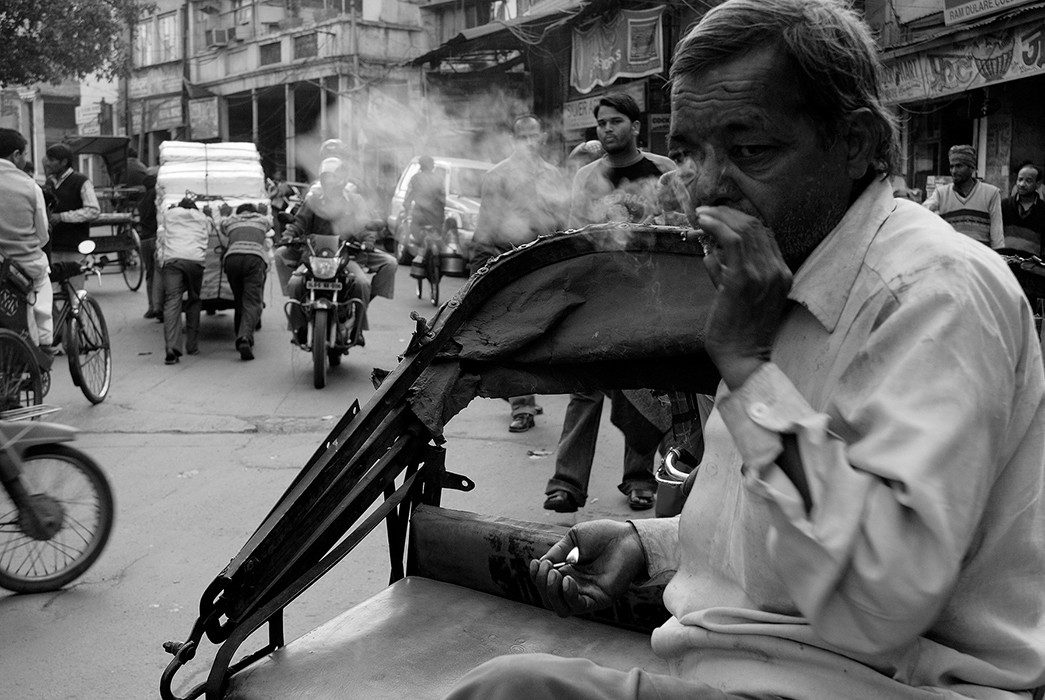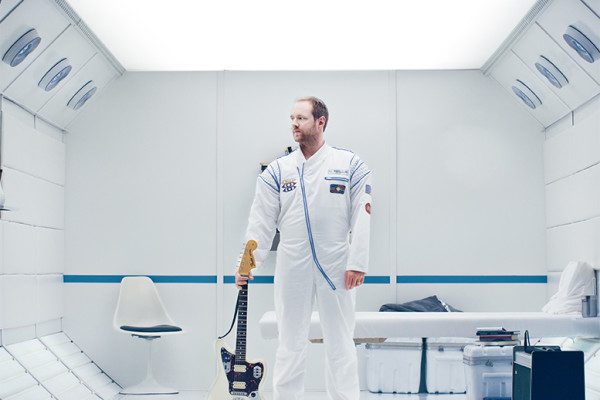Cities are not structures that catch people in motion and create some sense out of its populace. They are mental spaces as much as they are physical spaces, writes Soumabrata Chatterjee.
“See how your world has cracked.
Why aren’t you here? Where are you? Come back.
…
Is history deaf there, across the oceans?”
—Agha Shahid Ali, A Pastoral
To talk about the act of migration is to speak in a secret language, one which is not available to all yet appeals to all. This codified language opens up to someone who has, in fact, produced it. Not produced by virtue of love, but one that is borne out of passionate love for a lost world, a world gone by.
When people migrate, they leave a piece of them behind, to be picked up by their friends who didn’t make it across the borders. This piece speaks to none; it stands mute amidst all the chatter, yet what Jacques Ranciere calls its “mute chatter” is powerfully vocal. It doesn’t need words to express; its “unutterability” becomes its tool of expression. It just needs to be picked up, caressed, taken care of, and then it will tell you stories about the memories scattered like rags, about unrequited love for one’s homeland, about unbridled passion for a time that has sadly come to an end.
Why is the past so irredeemable, brutal yet alive at the same time?
A homeland is very personal. It is mine and nobody else’s. I can talk to it, play on its streets, cry hoarse over broken relationships, and sing nonsensical lyrics while being drunk, sleep, be sick, and die. Nations are artificial. They are huge structures of workability; my home is my leisure.
The past is never an ally to such people, people like Rushdie, people like Taslima, people like those who were killed in Morichjhappi, people who weren’t considered people but dilapidated body bags to be piled on one after the another. Why did the past lead us into this present? Where the body of a dead young boy becomes the “defining image” of 2015? Isn’t the past ours, theirs, yours? Or is it something else? Something with a mind of its own, refusing to let go of a history that will always glorify the hunter, celebrate hatred, congratulate the victors. Why doesn’t it answer to us? Why has it made our homeland a part of the nation which disregards us?
A homeland is very personal. It is mine and nobody else’s. I can talk to it, play on its streets, cry hoarse over broken relationships, and sing nonsensical lyrics while being drunk, sleep, be sick, and die. Nations are artificial. They are huge structures of workability; my home is my leisure. Nations are mobile; my home is static. I stay, and stay, and stay some more in my home, which accepts me as I am. And then, one day, nations and other nations cause me to move out. Why will I? Is it not the worst form of sin? A sacrilege never to be forgiven, forgotten, or healed!
Have we stopped to think about the migrant and his relationship to his city? We talk a lot about post-coloniality, about idealisms and defunct ideologues, but what about space? The space which I share with my own abode. I am not different to the space which I inhabit. It is a part of me, very much created by me as much as I am created by it. Space is not something geometric. It is me, just an extension of me which includes others. Other migrants. We carry this space within us wherever we go.
Kashmir always came to Shahid Ali in a postcard. We carry dead remnants of that lived space with us too. Lived because it was experienced in a way nobody else can comprehend.
Kashmir always came to Shahid Ali in a postcard. We carry dead remnants of that lived space with us too. Lived because it was experienced in a way nobody else can comprehend. But we know that space is lost for us. It is only through an act of nostalgia that we can redeem that past. Kashmir, Multan, Syria, Kolkata doesn’t exist anymore. Cities are not structures that catch people in motion and create some sense out of its populace. They are mental spaces as much as they are physical spaces. I live in it. It lives in me.
The art of defining a city, both spatially and historically, is to attribute some transcendent value to it, which might stand true against some rudimentary hypothesising. This value that we impose, almost violently, on the city, gives it form and texture and makes a relatable history of that city possible. But that’s just the diachronic part of it. What about its synchronicity? What about cities caught “in the moment”, so to speak?
In our investigatory thrust we assume that the city “always already” functions via its culture and its heritage and that it always forms a dialogue with what has passed away. There is no “outside” in that interpretation, no point of reference that is not hopelessly dialectical. A city then becomes a territorialised space, a claimed space, a known space which can only form a dialogue with its ghosts and cannot offer any radical possibilities of a future that is not calculable nor programmable and thus a non-future in some sense of the term.
“The present epoch will perhaps be above all the epoch of space. We are in the epoch of simultaneity: we are in the epoch of juxtaposition, the epoch of the near and far, of the side-by-side, of the dispersed.”
—Michel Foucault, Of Other Spaces: Utopias and Heterotopias
In this essay, Foucault theorises the contemporaneousness of time, both past and present, in a particular notion of space that engenders and then accommodates both. This “space” in itself is historically situated, as Foucault draws a parallel between Structuralism’s tendency to connect the dots that have gone awry on the temporal angle and the 19th century’s obsession with history.Galileo’s intervention, according to Foucault, gave rise to infinite space, which was antagonistic to the hierarchical spaces of the Middle Ages. The dichotomies of private/public, social/economic, sacred/profane and urban/rural still play out in our imaginaries because of the residual tension between the erstwhile definition of space as a territory to be “marked” and conquered, and the more recent concept of space as “lived space”.
Lived space brings up the notion of “site” as a meeting ground of shifting interests, or the mapping of disparate points in motion. Time itself has become just a point in an axis of movement, an urge “to become” something else than what you are already. However, Foucault is talking about external space, in a sense that “space” is exteriorised: “The space in which we live, which draws us out of ourselves, in which the erosion of our lives, our time and our history occurs, the space claws and gnaws at us, is also, in itself, a heterogeneous space.”
“The space in which we live, which draws us out of ourselves, in which the erosion of our lives, our time and our history occurs, the space claws and gnaws at us, is also, in itself, a heterogeneous space.”
What Foucault is pointing out is that we do not inhabit a void, because that would imply that the spaces we occupy are easily interchangeable. Rather, there are sites with a transformable set of relations, which are not superimposable. From this, Foucault extracts the concept of “other” spaces, the spaces which stand in opposition to the ones that surround them. In a sort of aporetic construction, he conceives of utopias and heterotopias as sites of “being otherwise”.
Utopia is simply the absence of place. It represents an idealised society and it is precisely that quality of perfection which makes it the inverted version of what society is. Heterotopias, on the other hand, are a constant in every culture. They are counter-sites which stand in blank contrast to the “real sites” and it is in them that those real sites are contested, and subverted.
He then talks about the mirror as both a utopic and heterotopic site. The mirror is a “placeless place”—it is a sort of virtual space beyond what I am. It reiterates what I am but does so by projecting behind the surface, and thus a perverted space where everything in the originary has gone topsy-turvy. It is also a heterotopia because the mirror does exist in real life, and it reasserts my position in a place where I am absent and thereby countering my real position.
Migrated people are such heterotopias; they carry their hurt with them wherever they go. They are hopelessly romantic in their act of looking back at a past that will never come again. Those memories of estrangement, of being hybrid, of being caught in-between spaces, spaces which collide and crush each other.
Migrated people are such heterotopias; they carry their hurt with them wherever they go. They are hopelessly romantic in their act of looking back at a past that will never come again. Those memories of estrangement, of being hybrid, of being caught in-between spaces, spaces which collide and crush each other. We are such fragile beings, our very existence depends on a lie retold so many times that it has now become truth. Truths manifold, lies galore, and I still relentlessly follow my homeland in every home I live. I still strive for a glimpse of those streets, of those rivers, of those stories I heard and forgot…
That’s why we are heterotopias unto ourselves, we are caught in this glance of looking at ourselves, at this gesture which doesn’t leave a chance to us to explore the beyond. Yet we will live, we will live for our homeland that has been lost, in the hope that one day I will move around those streets again, cry hoarse, sing, cry and be silly!














